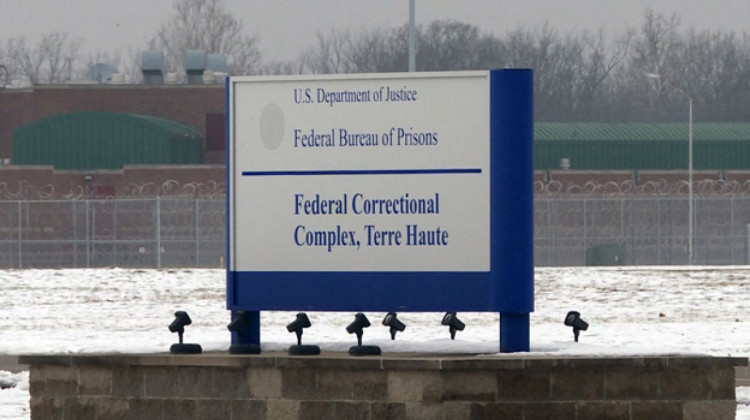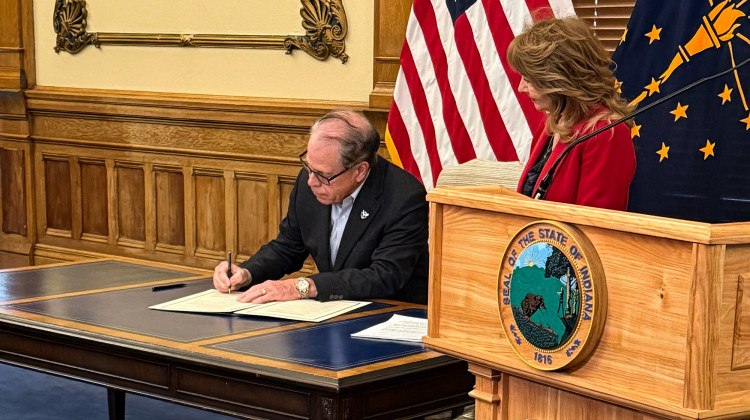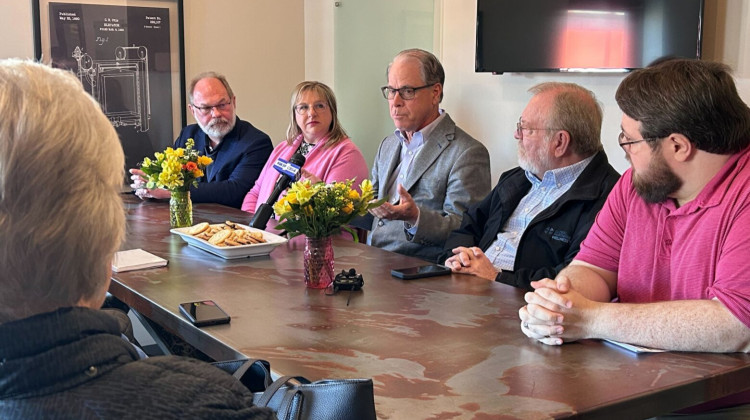Quite possibly, you've noticed some new food labels out there, like "Not made with genetically modified ingredients" or "GMO-free." You might have seen them on boxes of Cheerios, or on chicken meat. If you've shopped at Whole Foods, that retailer says it now sells more than 3,000 products that have been certified as "non-GMO."
But where does non-GMO food come from? After all, 90 percent of America's corn and soybeans are genetically modified, and producers of eggs, milk and meat rely on those crops to feed their animals. Soy oil and corn starch are used throughout the industry. Can big food companies really avoid GMOs?
Looking for the answer, I ended up at one of the first links in the non-GMO supply chain: a corn processing facility just north of the small town of Cerro Gordo, in west-central Illinois.
Truckloads of corn arrive here and stop at the "scale house," where they're weighed. A remote-controlled steel probe dives into each load and sucks out some grain for testing.
That's all standard at any corn handling facility. But at this processing plant, operated by Clarkson Grain, there's one more test: a quick, five-minute check to see if this corn contains specific proteins that are the signature of genetic modification.
Farmers have embraced these novel proteins; they protect a growing cornstalk from some insects, or weedkillers. So, at almost any corn processing facility in America, this test would come up positive.
But here, a positive test means rejection; the truck has to turn around and leave.
Clarkson Grain only accepts GMO-free grain because that's what its customers want.
"We don't tell people what their values should be. We inquire, and then we do our best to support those values," says Lynn Clarkson, the company's founder.
Clarkson has been in the grain business for 40 years. He doesn't seem terribly excited about prices and profits, but he loves to talk about relationships: about the customers and suppliers who've stayed with him for decades, or the telegram of thanks he got, years ago, after his first foreign deal. "That was the first compliment I had ever received in the grain business in 20 years," he recalls. "Most of us want to make money, but we also want to do something that somebody appreciates."
That story, and the story of Lynn Clarkson's company, helps explain how American food companies can, in fact, go GMO-free in a world filled with GMOs.
And the story starts years ago, long before any GMOs existed.
Lynn Clarkson was a small-town grain dealer looking for new buyers for his corn. He drove to Chicago to talk to food companies, and he realized that they had a problem. "If you ask food processors anywhere in the world, 90 percent of them will tell you there's too much variation in incoming raw materials," he says.
The corn that these food processors were buying wasn't consistent. They'd cook it and get widely varying results.
Clarkson told them that this problem had a simple cause. They were getting perhaps 30 different genetic types of corn in each shipment.
Clarkson also proposed a solution: "buying a single variety, a single hybrid, delivered at any one time, so you're not mixing different cooking characteristics."
Clarkson set up a system that allowed him to deliver exactly that. He signed contracts with farmers near his hometown of Cerro Gordo, agreeing to pay them a little extra to supply specific corn hybrids, or particular varieties of soybeans.
He delivered this uniform, predictable grain to food companies, first in Chicago and then to those appreciative foreign buyers — in particular, in Japan.
When GMOs came on the scene about 20 years ago, it turned out that his Japanese customers didn't want them. Japanese food companies were suspicious of the new technology and didn't want to risk a hostile consumer reaction.
So Clarkson tweaked his supply chain to deliver what the Japanese wanted. He made sure his farmers grew varieties that weren't genetically engineered. The non-GMO niche was born.
He wasn't the only one doing this. Clarkson shows me, on a wall map, the concentration of farmers who supply the Japanese market. Many are along the Illinois and Ohio rivers, with easy access to ships heading toward Asia.
There are thousands of them, and they're now happy to supply customers in the U.S., too.
"U.S. buyers often think that we're starting from scratch" with non-GMO grain, Clarkson says. "Well, we're not. We're starting from millions of bushels of demand that are in place and being satisfied on a regular basis for Asian clients."
Most of these farmers don't have any philosophical objection to genetic engineering. In fact, most of them grow both GMO and non-GMO crops.
Allen Williams, who grows grain for Lynn Clarkson, says the choice to grow non-GMO grain simply comes down to money. "You're just trying to improve your profit," he says. "There's not a lot of ways to do that, if you're growing commodities. This is one way to do that."
He'll sell his non-GMO grain for 10 percent or 15 percent more than the standard market price. But there are complications. Some of the extra income gets eaten up by extra costs. He'll spend more money on pesticides, for instance, for his non-GMO soybean fields.
He also has to make sure the grain he sends to Clarkson Grain doesn't contain any traces of his GMO crops. So when he finishes harvesting one of his GMO fields, he has to spend hours cleaning out his combine.
"You know, time is of the essence during harvest," he says. "So to take time during harvest to clean out equipment and storage locations and transportation equipment is very expensive for a farmer."
Also, because corn pollen blows in the wind, he has to make sure his non-GMO fields of corn are a hundred feet from any GMO corn fields.
The separation doesn't always work perfectly. But Lynn Clarkson says the food industry is pragmatic; companies know that they have to tolerate small traces of GMOs. "It always comes down to: How do you define GMO-free?" he says. "What's the tolerance level? If it's zero, we might as well have a drink and part friendly, because we can't do business. We cannot hit a zero standard."
People just need to know, he says, that in the U.S., "GMO-free" means that something contains no more than 0.9 percent GMOs.
Demand for non-GMO grain is growing. Lynn Clarkson has told farmers that he'll buy about 25 percent more non-GMO grain next year.
At the company's modest offices beside the railroad tracks in the small town of Cerro Gordo, Wyatt Muse is fielding calls and emails. "We have everything from the home survivalist wanting a 5-gallon bucket for their basement, up to people wanting a Panamax vessel to ship it into East Asia," he says.
The latest query, sitting on Muse's desk, is from a snack food company in Europe. It wants non-GMO corn. "We're going to send one container next week, and assuming they like the quality, we would probably be doing a 100 to 120 containers over the next few months," he says.
In the world of international grain trading, that's still pretty small. But there's a potential development that could transform this small niche market, Clarkson says: a surge in orders for animal feed. A few poultry and egg producers already are going GMO-free; if others do the same, the non-GMO wave could turn into a tsunami.
9(MDEwMDc1MzM3MDEzNDczOTA0MDc1MzViMQ001))
 DONATE
DONATE








 Support WFYI. We can't do it without you.
Support WFYI. We can't do it without you.